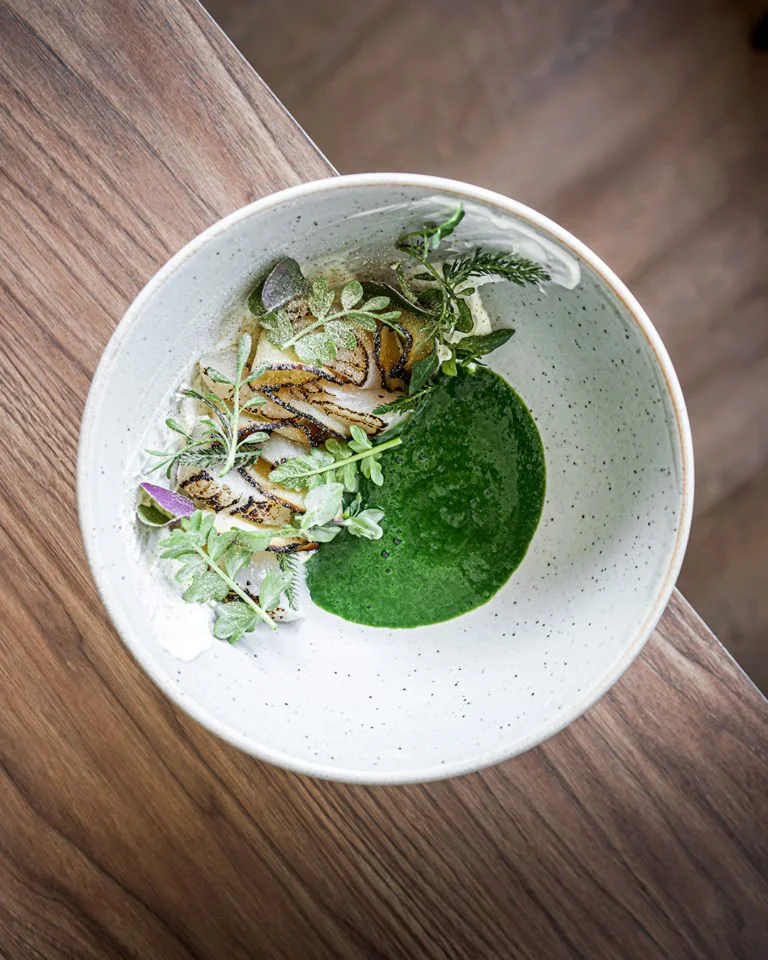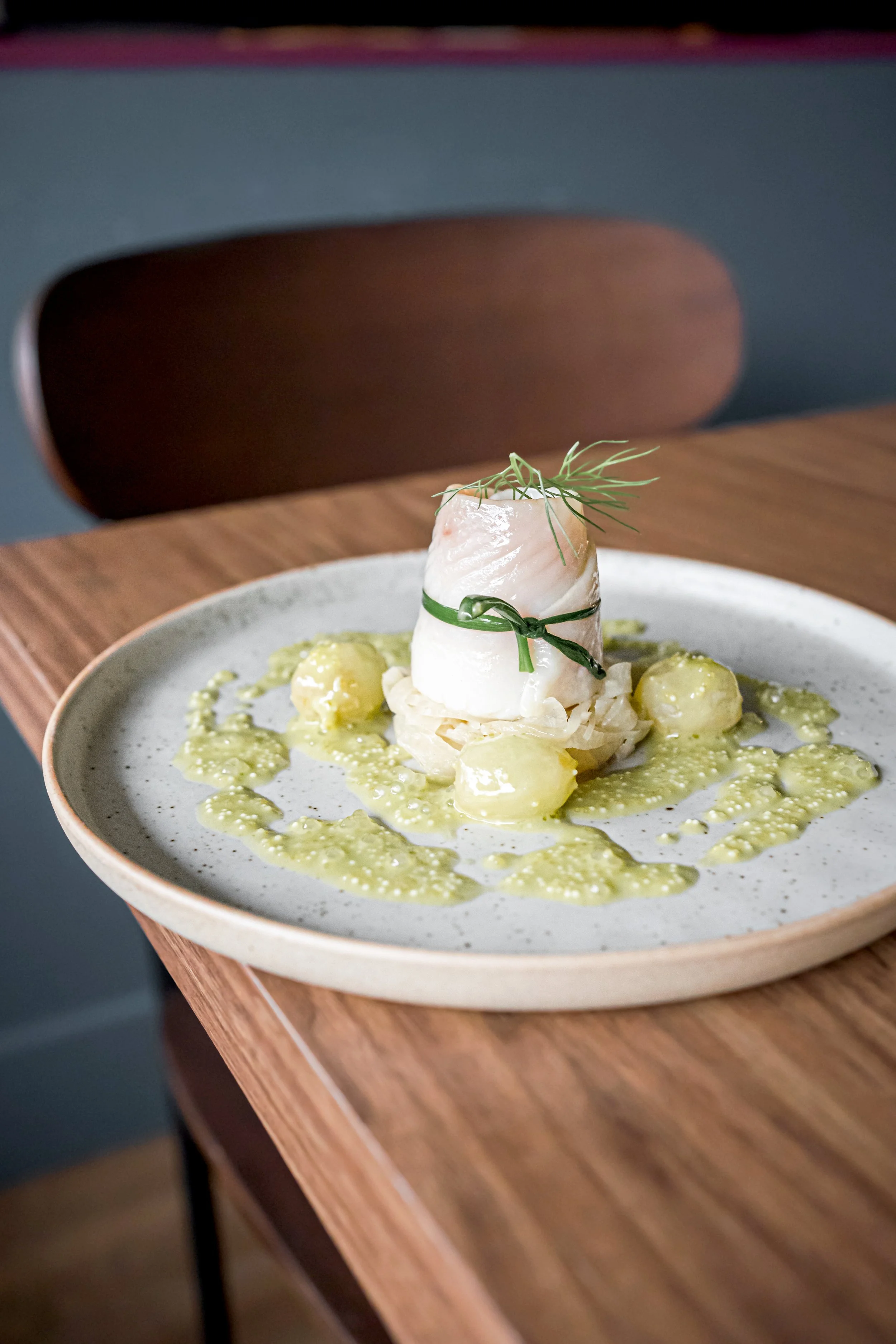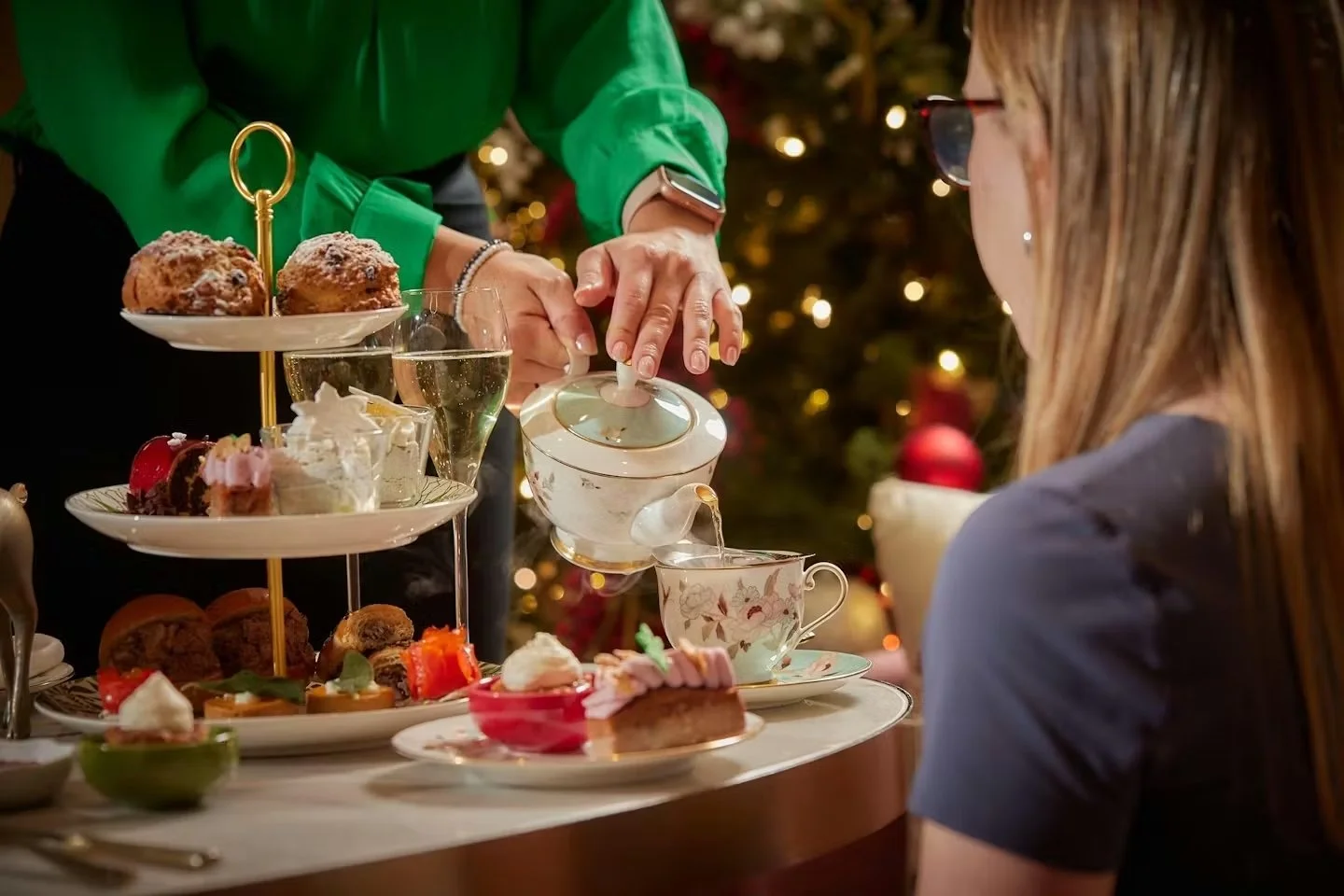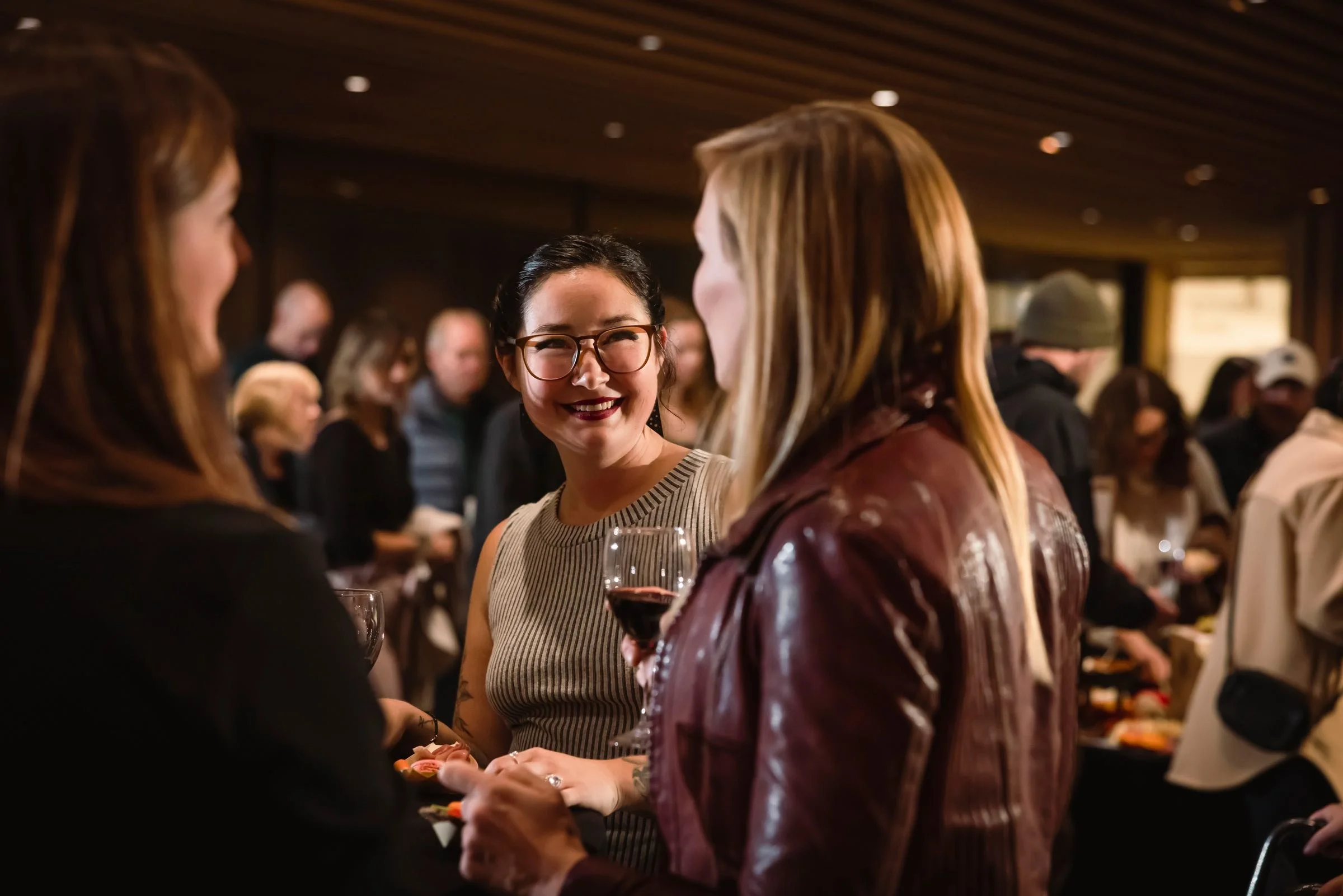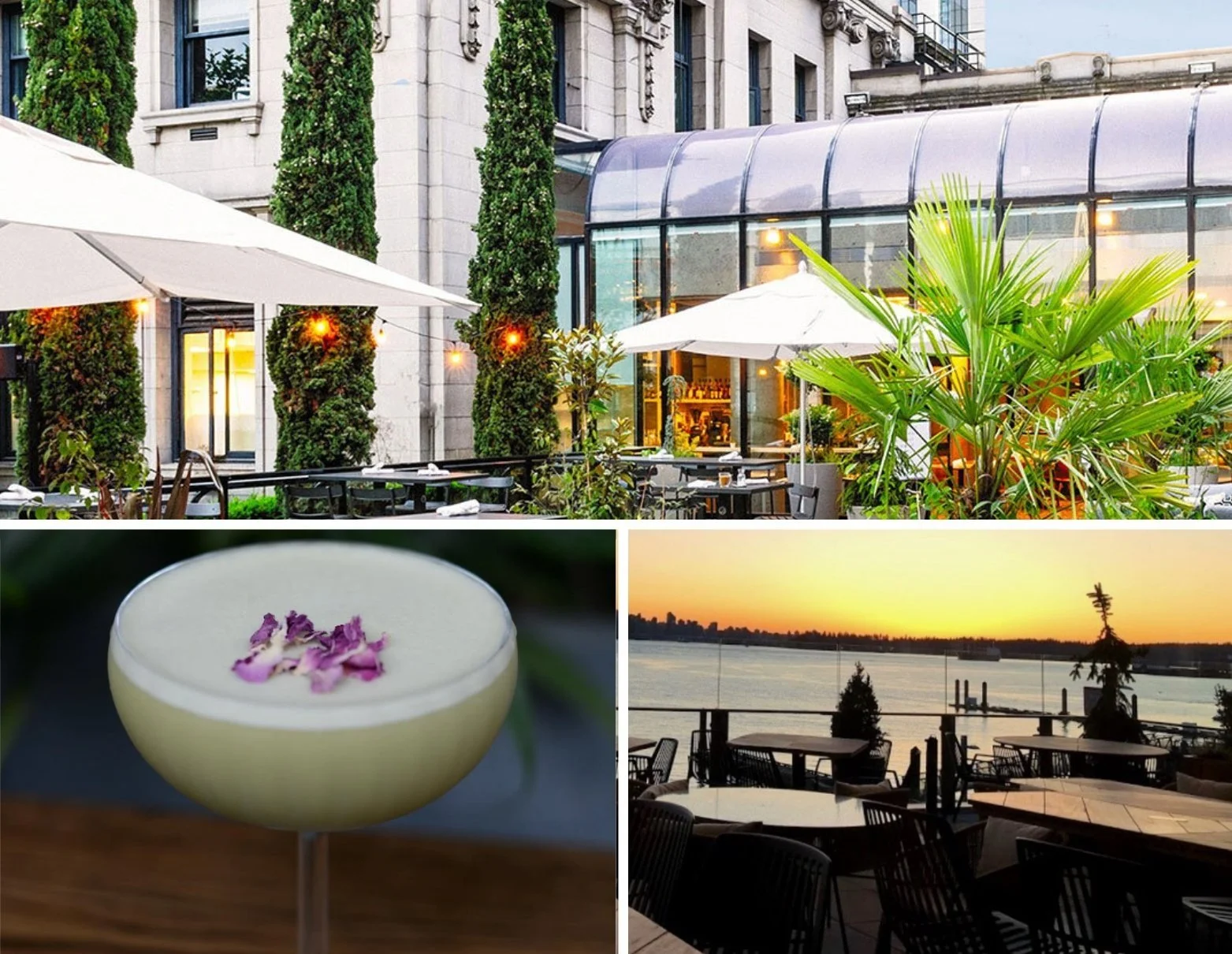At Vignette, Vancouver chef Ash Kurtz channels his inner artist
The Mount Pleasant restaurant by Michelin-rated Boxset Collective has stories of travel and whimsy to tell
Ash Kurtz. Photo by Sarah Annand
ASH KURTZ GREW UP playing hockey in North Burnaby and got a summer job during college at (the recently closed) Cactus Club Café on Robson. The local chef fell in love with the vibe of the kitchen—the camaraderie and fast-paced chaos reminded him of his favourite team sport. He studied at Vancouver Community College, gained experience in Michelin restaurants across Europe, spent four years at Vancouver’s St. Lawrence, and launched Bar Susu. He’s now heading Mount Pleasant’s buzzworthy Vignette. It has a lot of stories to it, the space living up to its namesake of “an impression or glimpse into something special”.
The wine lounge and restaurant serves a snacky a la carte menu and multicourse tasting menu, one half of the room adorned with a garden of dried foliage dangling from the ceiling. By day, the spot is Novella Coffee Shop, offering House of Funk beans, Cultivate Tea, breakfast items, pastries made in house and by ButterBoom Bakery, and weekend cocktails and wines. There’s also an adjoining market that carries a curated selection of local foodstuffs. The dynamic space is run by The Boxset Collective, the same group behind Michelin-starred Published on Main, Michelin-recommended Bar Susu (which was intended to be a temporary pop-up, but has been on fire ever since opening with its small bites and stellar wine), Twin Sails Brewing, and Thorn & Burrow Wines.
Vignette. Photo by Sarah Annand
Back to Kurtz. He’s in his element creating the menus for Vignette, putting his own spin on classic dishes rooted in French technique.
“Although I do fall into the category of French cuisine—that’s the backbone of everything I cook—there’s a melting pot of culinary influence from what I’ve learned from other people, other cultures,” Kurtz tells Stir. “For me, my food represents and expresses my experiences travelling. These menus are a true expression of things that I love about cooking and cultures. I love interacting with people and meeting new people and learning new things about different cultures, and that’s definitely a common thread in every culture in the world: people always communicate over food. Working in Michelin restaurants around Europe and working with the brigade, everyone in that kitchen comes from a different part of the world, so you learn a lot about their cultures through food.”
Vignette. Photo by Sarah Annand
Highly technical and whimsical are words that describe his dishes, perhaps best exemplified by the scallop crudo, a stunner that takes up to three days to make. Kurtz brines the scallops lightly but first slow-roasts celery root and lacquers it with a glaze made of leek ash. The burnt leek tops form a powder that he mixes with sourdough miso, Fraser Valley honey, and brown butter. Dehydrated overnight, the celery root ends up with an intense, sweet flavour profile. Next comes a slightly sour crème fraiche made in house and a bright green, earthy Vichyssoise made of celery and spinach juice. After blanching the spinach and squeezing out all of the moisture, the leaves go into containers used to spin ice cream and made into a purée. That gets added to the celery juice.
“It’s a lot of work,” Kurtz says. “What’s always number one for me is that a dish always has to have balance. I always try and balance the five basic flavours: sweet, sour, savoury, salty, and bitter. If you hit all those notes, you usually knock the dish out of the park. If the tongue can register all those flavours, it’s going to be delicious. When I’m designing a dish I think about all those elements and put them in there. The tasting menu is my opportunity to flex my culinary muscle, so to speak.”
Some other examples of Kurtz’s creativity: hot and sour soup, for which he makes classic pork consommé but reimagines it by flooding it with bright Thai flavours. A spiced lamb crepinette is his way of “tricking” people into eating a doner kebab: A Turkish-style kebab is wrapped inside pig or cow gall and baked, the gall fat keeping everything moist; it gets wrapped around a whole loin of lamb and is served with English peas, fava beans, and a sauce of bacon, Dijon, cream, and garlic—French influence with Middle Eastern flavours of aromatic herbs and spices like oregano, paprika, cloves, and anise.
The plating component across the board brings out his inner artist. For the scallop crudo, for instance, Kurtz takes a free-flowing and natural-looking approach, herbs scattered onto the plate, but as with other steps in his process, it’s very thought-out. “The hardest thing is knowing what to take off of a plate rather than to put on,” Kurtz says. “Less is more. I really like that idea of making something look like it’s super minimal and simple, but when you bite into it it’s clearly a lot more complex.
“Food for me should be exciting and interactive, so I really like to be playful with it and do something that’s a bit outside of French cuisine,” he adds. “A chef should be able to express themselves on the plate; that’s why most of us do it. We are artists to a certain degree. At the end of the day, you’re feeding people, so it has to fall within those parameters. It’s a practical artform.”
Vignette. Photo by Sarah Annand




